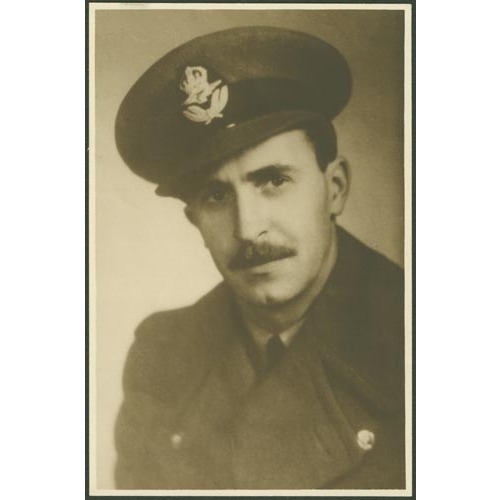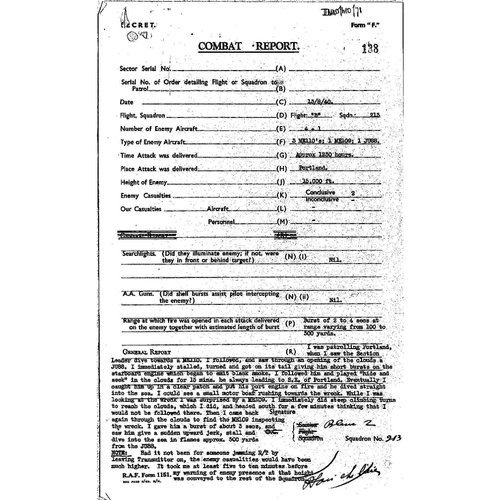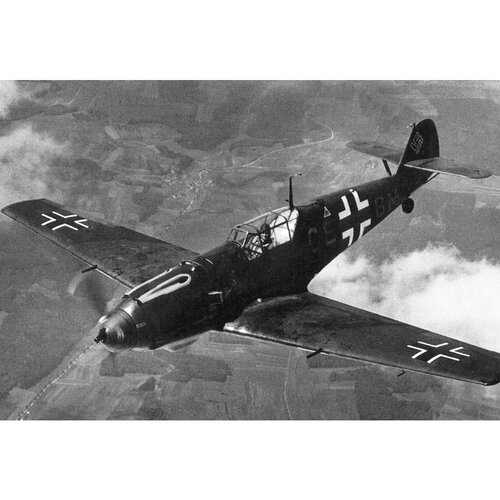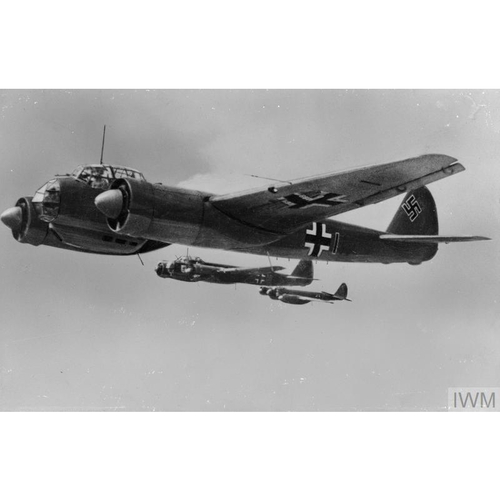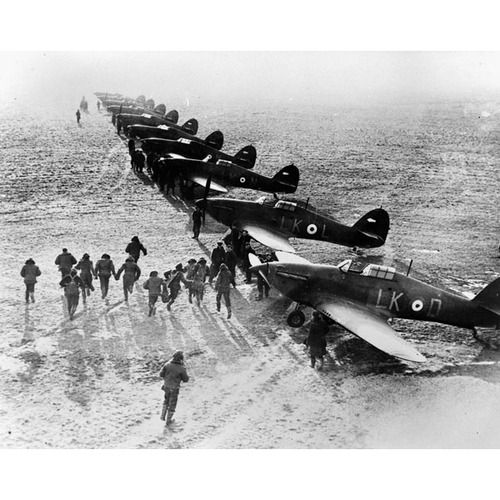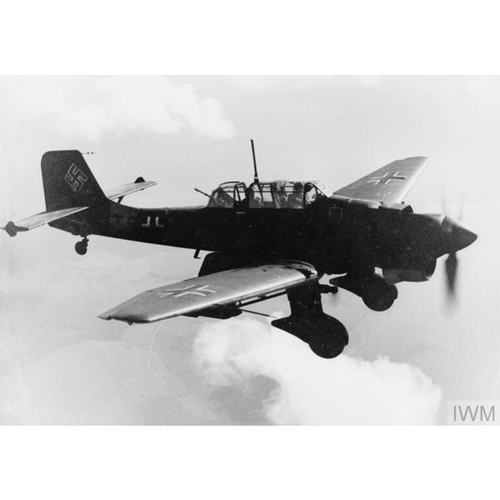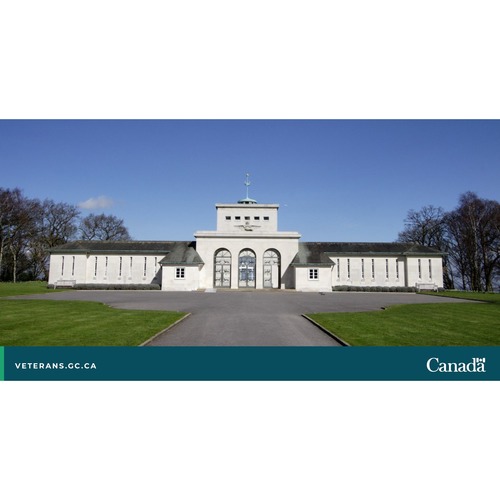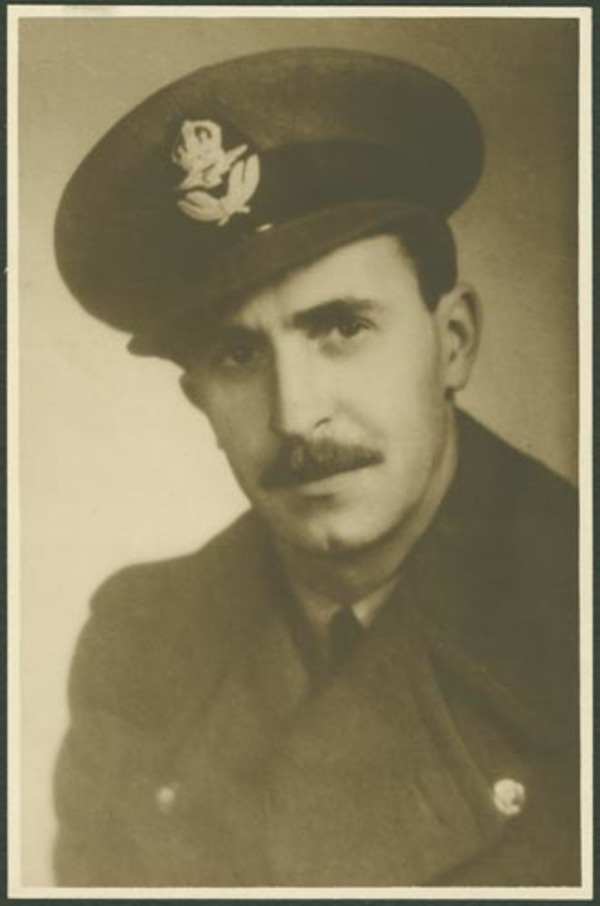
Source: Link
LARICHELIÈRE, JOSEPH-ÉMILE-PAUL (baptized Joseph-Paul-Émile), air force officer; b. 3 Dec. 1912 in Montreal, son of Georges Larichelière, a clerk, and Émiline Marsan; d. unmarried 16 Aug. 1940 over the English Channel.
Early life
Joseph-Émile-Paul Larichelière, who often went by Paul, grew up in Montreal. His family lived at 278 Avenue du Parc-La Fontaine during his youth. Paul was educated at the École Saint-Joseph until 1927 and then spent two years at the École Supérieure Saint-Louis, which was run by the Clercs de Saint-Viateur. He attended the Université de Montréal from 1931 to 1933 and was a part-time arts student at McGill University from 1935 to 1936, although he apparently did not graduate from either institution. While at McGill, he devoted much of his time to the university’s Flying Club, which operated a glider out of the Saint-Hubert airport.
Joining the Royal Air Force
Larichelière left Canada for England in August 1939 to study aeronautics at the University of Cambridge. He had less than a month to savour student life before the declaration of war prompted him to enrol at the No.22 Elementary and Reserve Flying Training School, Royal Air Force (RAF), in Cambridge. He later pursued further training at Kidlington, near Oxford.
In letters sent home, Larichelière claimed to have undertaken three “special missions” to the continent between January and March 1940. Although he spoke German, in addition to English and his native French, it is highly unlikely that a junior officer still in training would be sent on such missions or that they took place during the so-called phoney war – the few months at the outset of the conflict when neither side launched an attack. The situation would change completely after the fall of France.
Upon completion of his program Larichelière was granted a short-service commission of four years and was gazetted as a pilot officer on 18 May 1940. The same day he reported to No.6 Operational Training Unit, an advanced RAF fighter-training unit at Sutton Bridge, where he chiefly flew the Hawker Hurricane single-seat monoplane. With France collapsing and Adolf Hitler’s troops approaching the English Channel, Larichelière’s course was compressed into one week, and on 25 May he was posted to No.213 Squadron, RAF, in Wittering. The squadron had been engaged in the Battle of France, and it would patrol the channel throughout the Battle of Britain.
The Battle of Britain
As early as 2 June, Larichelière was airborne with his squadron, practising formation flying and combat manoeuvres. On 11 June he completed his first offensive patrol, flying with 11 other Hurricanes across the channel. They saw German aircraft but did not engage in battle. By 19 June, No.213 Squadron had been transferred to Exeter. Throughout July Larichelière took part in coastal patrols, in section or flight strength, over the channel coast east and west of the city, often escorting a convoy of ships. The tempo of operations increased in August 1940 when the Germans began concentrating their attacks on British airfields and the RAF’s infrastructure. No.213 Squadron met many more German aircraft during patrols, even from their location west of the main battle area.
Larichelière was developing into an effective fighter pilot as his combat reports show. On 13 August the Germans attacked the Isle of Portland with Junkers Ju 88 fast bombers. As a section wingman, Larichelière followed his leader in pursuit of an enemy aircraft, and as he broke through the clouds, he saw, attacked, and damaged a Ju 88. He followed it for 15 minutes before shooting it down over the channel. As he circled the wreckage, a German Messerschmitt Bf 109 single-seat fighter surprised him, but he evaded it by climbing steeply into the clouds. Upon descent, he saw the Bf 109 pilot inspecting the wreckage. Firing a three-second burst from his eight machine guns, he ignited the enemy aircraft, which crashed 500 metres from the first one.
Airborne again at 15:25, on his fourth patrol of the day, Larichelière thought he saw a bomb drop into the water below. Climbing through thick clouds to investigate where it had come from, he emerged in the midst of a formation of Messerschmitt fighters. He fired a short burst into a Bf 110, a twin-engine machine, saw it explode, and dove back into the clouds.
Late in the afternoon of 15 August, while flying over the Isle of Portland, Larichelière and his section again encountered several German aircraft. He dived towards a Bf 110 and gave a short burst. In his combat report he wrote that he saw the “hood fly off and airmen jumping out.” The German plane crashed into the sea. As Larichelière climbed back through a thin layer of cloud, he spotted a Junkers Ju 87 dive-bomber retreating. When he was on its tail, he fired two bursts. “I saw all kinds of bits and pieces flying about,” and the bomber spun into the sea, he later reported. After climbing again and manoeuvring just below another Bf 110, he pulled up and “gave him a long burst in the left engine. Half of the wing blew up and the 110 seemed to cartwheel, spin and finally crash into the sea.” Larichelière then returned to base, his ammunition exhausted. In three days he had shot down six enemy aircraft, all of which he watched crash or blow up. According to the British the fierce fighting on 15 August had cost the Germans 75 planes, which would be the greatest loss to their air force during the Battle of Britain (10 July to 31 October).
The following day, 16 August, Larichelière flew out twice. No.213 Squadron met enemy aircraft off the Isle of Wight. Larichelière did not return from the second sortie. Neither his Hurricane nor his body were ever found; it is assumed that he was shot down over the channel. He was one of eight RAF pilots lost that day.
Remembering a young aviator
The Runnymede Memorial in Englefield Green, near Windsor, England, commemorates the more than 20,000 Commonwealth men and women who were lost during operations from air bases in the United Kingdom and western Europe during the Second World War and who have no known graves. Fighter ace Joseph-Émile-Paul Larichelière is among them. His name is also cast in bronze on the Battle of Britain Monument in London, and he is listed on McGill University’s honour roll for the Second World War.
Larichelière is representative of the young Canadians of the 1930s who wanted to play a role in aviation but were unable to join the then-minuscule Royal Canadian Air Force or enter civil aviation. Some were trained through the RAF’s short-service-commission scheme, many of them young fighter pilots who would see action during the Battle of Britain. Forty-seven Canadian airmen lost their lives during those months. Those who survived became the leaders of the RAF and RCAF later in the war.
Ancestry.com, “Quebec, Canada, vital and church records (Drouin coll.), 1621–1968,” Saint-Louis-de-France (Montréal), Joseph-Paul-Émile Larichelière, 1912: www.ancestry.ca/search/collections/1091 (consulted 11 March 2024). Can., Dept. of National Defence, Directorate of Hist. and Heritage (Ottawa), J.-E.-P. Larichelière biog. file. LAC, R233-114-9, Que., dist. Saint-Jacques (200), subdist. St Jacques Ward, Montreal (3): 6. NA, AIR 27/1315 (No 213 Squadron: operations record book). Le Devoir, 1 mai 1941. Gazette (Montreal), 2 May 1941. Can., Royal Canadian Air Force, Air Hist. Section, Among the few: a sketch of the part played by Canadian airmen in the Battle of Britain (July 10th – October 31st, 1940) (n.p., 1948). Directory, Montreal, 1919–37. R. C. Fetherstonhaugh, McGill University at war, 1914–1918, 1939–1945 (Montreal, 1947). John Keegan, The Second World War (London, 1989).
Cite This Article
Owen A. Cooke and Mark Ashmore, “LARICHELIÈRE, JOSEPH-ÉMILE-PAUL,” in Dictionary of Canadian Biography, vol. 16, University of Toronto/Université Laval, 2003–, accessed December 12, 2025, https://www.biographi.ca/en/bio/laricheliere_joseph_emile_paul_16E.html.
The citation above shows the format for footnotes and endnotes according to the Chicago manual of style (16th edition). Information to be used in other citation formats:
| Permalink: | https://www.biographi.ca/en/bio/laricheliere_joseph_emile_paul_16E.html |
| Author of Article: | Owen A. Cooke and Mark Ashmore |
| Title of Article: | LARICHELIÈRE, JOSEPH-ÉMILE-PAUL |
| Publication Name: | Dictionary of Canadian Biography, vol. 16 |
| Publisher: | University of Toronto/Université Laval |
| Year of publication: | 2024 |
| Year of revision: | 2024 |
| Access Date: | December 12, 2025 |


